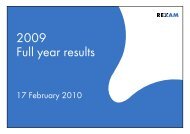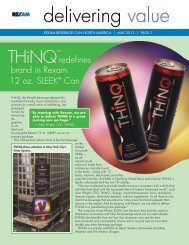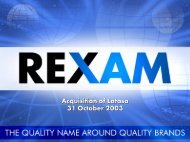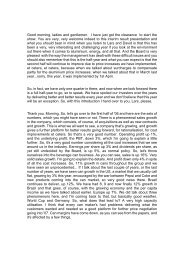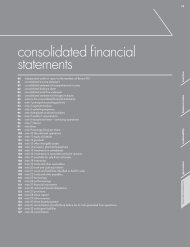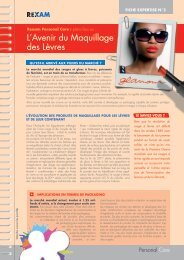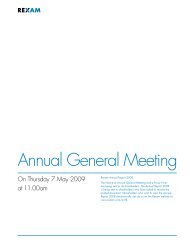All case studies
All case studies
All case studies
You also want an ePaper? Increase the reach of your titles
YUMPU automatically turns print PDFs into web optimized ePapers that Google loves.
ENVIRONMENT<br />
EMISSIONS<br />
Reducing emissions using<br />
natural solutions<br />
VOC’s are the ‘Volatile Organic Compounds’<br />
released into the atmosphere as a result of<br />
numerous companies manufacturing processes<br />
around the world. In a domestic capacity, we<br />
all come into contact with VOC’s regularly,<br />
for example; when you open a tin of paint<br />
there is an unpleasant smell, this smell is mainly<br />
composed of VOC’s. In Rexam’s Cosmetic<br />
Closures business, VOC’s are emitted as a<br />
result of our varnishing processes.<br />
Although there are multiple options for VOC<br />
reduction available to any business, many of<br />
these require large amounts of energy to run<br />
the equipment involved, thus actually increasing<br />
energy usage and, as a result, other harmful<br />
emissions. At Rexam we use several different<br />
methods to treat VOC’s to try to ensure we emit<br />
only cleansed air into the atmosphere. One of<br />
the most ecologically friendly solutions is the<br />
use of Peat Pits to absorb VOC’s prior to release.<br />
Peat pits use a bio filtration system for the<br />
treatment of any polluting gas emissions. The<br />
process and equipment is described and<br />
pictured to the right:<br />
responsibility<br />
<strong>case</strong> study<br />
How does it work?<br />
Firstly, the air that contains VOC’s is collected<br />
using a network of specialised pipes that are<br />
placed on the roof to drain the air from the<br />
workshop below (see figure 1).<br />
The main pipe (figure 2), then carries the<br />
polluted air to the washing equipment.<br />
The purpose of the washing equipment (figure<br />
3) is to separate any hard particles from the<br />
extracted air. The polluted air is then pushed<br />
through a peat pit using a ventilator. (Figure<br />
4 shows the 600 m3 peat pit whilst it was in<br />
construction prior to the roof being fitted).<br />
In the peat there are enzymes that ‘’eat’’ any<br />
VOC’s thus destroying them before they can<br />
enter into the atmosphere.<br />
In 2001, Rexam received an award for this<br />
equipment and process, which was the first of<br />
this kind (for varnishing plastic parts for<br />
cosmetics) to be installed in France.<br />
Pictured below: The team responsible for the<br />
peat pit project, holding the award presented<br />
to them in October 2001.<br />
Figure 1<br />
Figure 2<br />
Figure 3<br />
Figure 4



